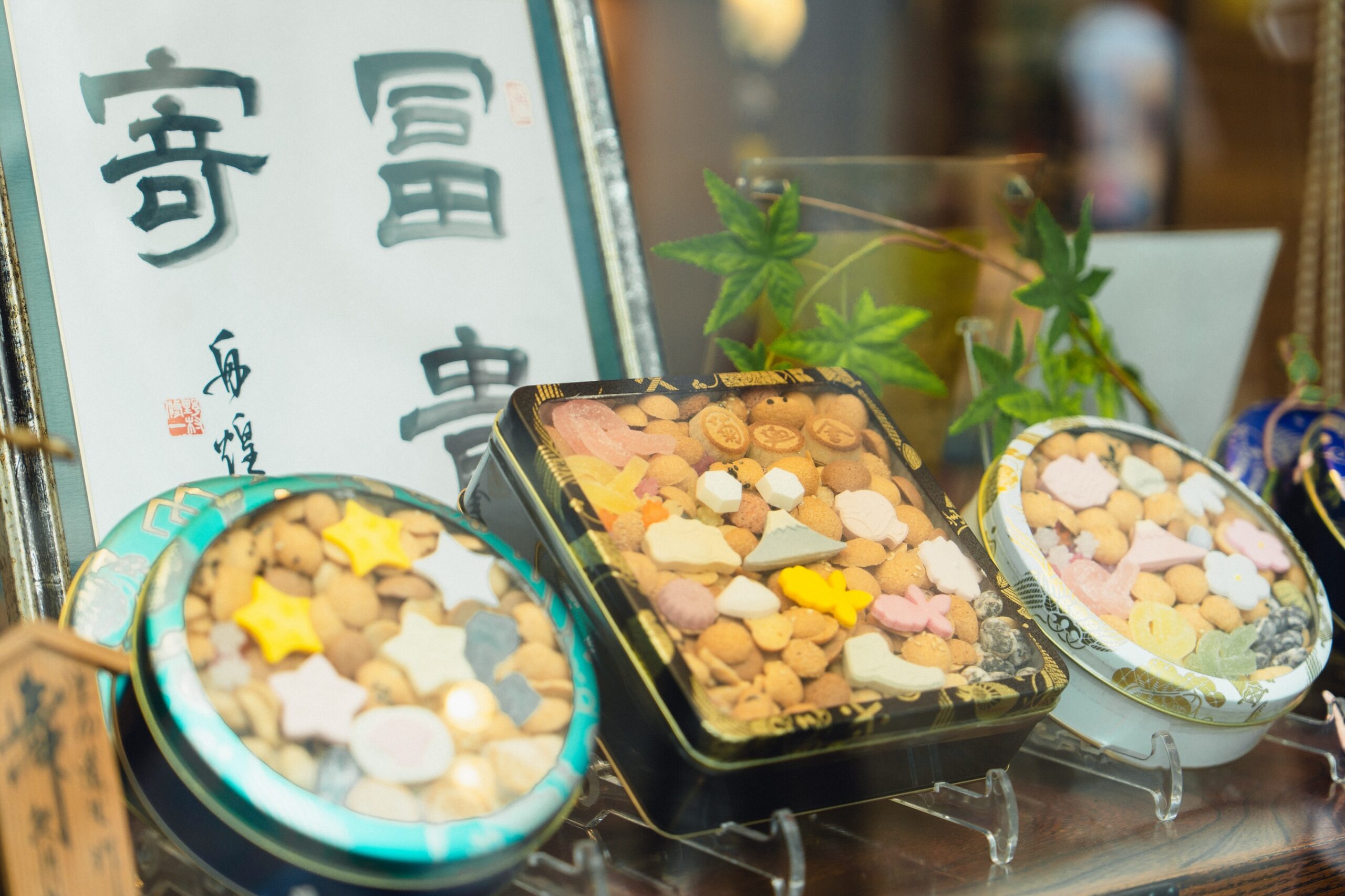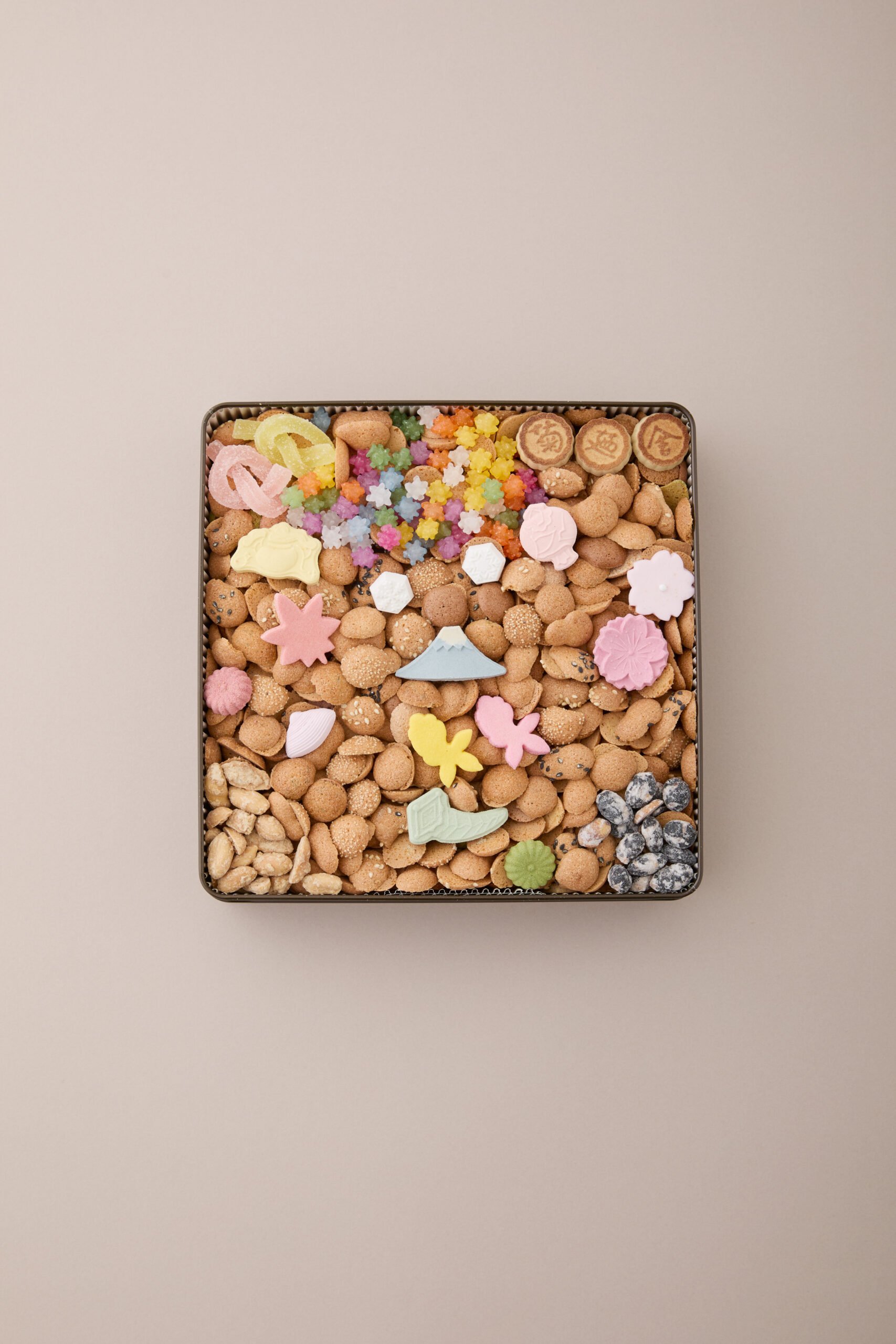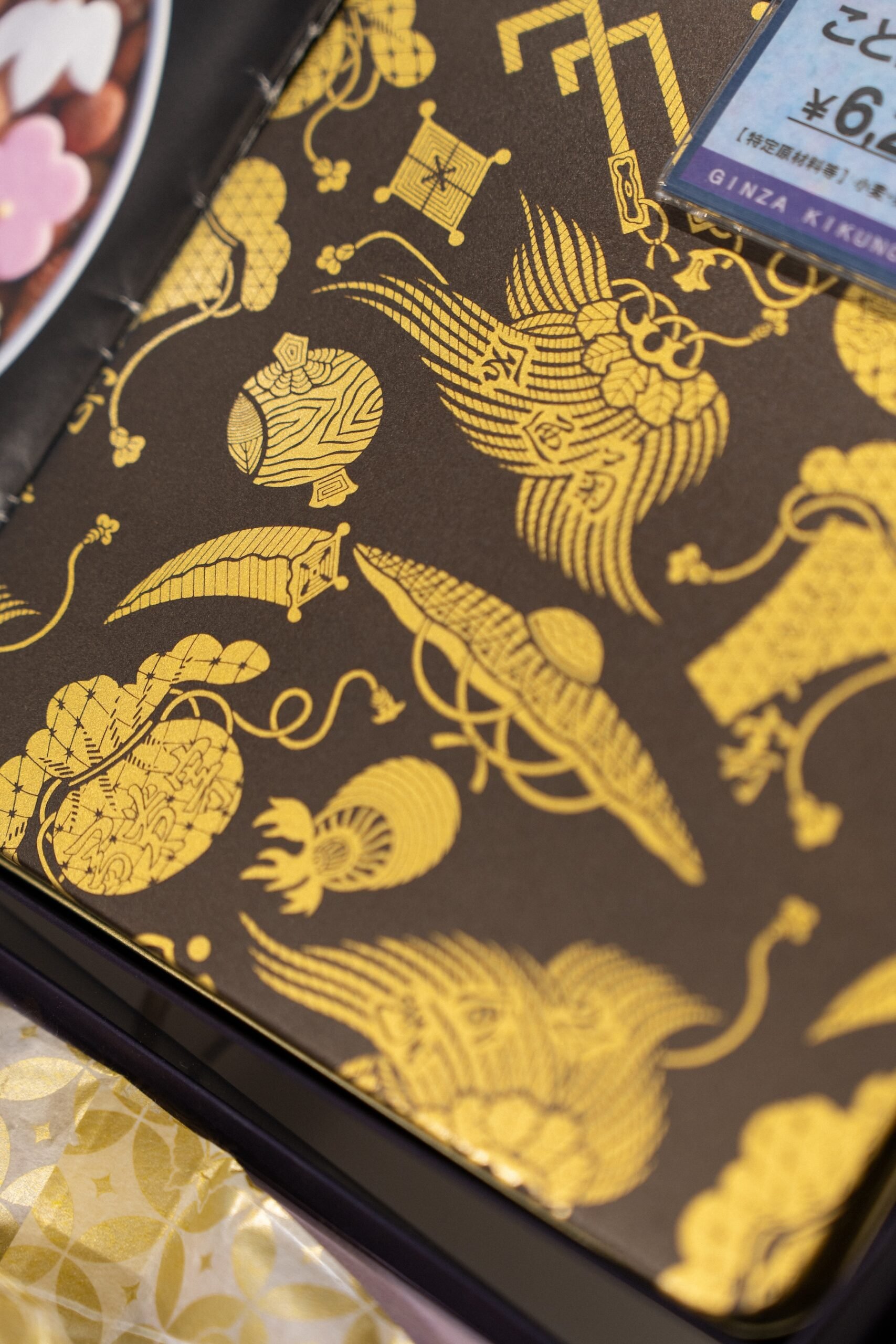CATEGORY
AREA

2025.09.01
A renowned Edo-style wagashi shop with more than 135 years of history, where craftsmanship meets playful creativity.
 Nearest Station
Nearest Station
Founded in the Meiji era, “Kikunoya Ginza Honten” has continued for 135 years in Ginza. Its signature confection, the “Fukiyose,” is a brightly colored assortment of dry sweets packed into a tin, expressing Japan’s four seasons and wishes for happiness—a beautiful and festive delight. The shop also offers store-exclusive items such as freshly fried “Age Manju.” It is a renowned Ginza establishment where tradition and the playful spirit of artisans live on.
The history of “Kikunoya Ginza Honten” began in 1890 (Meiji 23), when the shop first started selling Kabuki senbei near the Kabuki-za Theater. Since then, it has preserved tradition while overcoming many challenges of different eras. In 2021, the main store was relocated to its founding site on Azuma-dori. Now in its fifth generation, the shop strives to make Ginza—often seen as formal and exclusive—more approachable through warm and friendly customer service. In 2024, they also began offering wagashi-making classes to share the appeal of the craft with the next generation. While honoring tradition, the shop continues to be beloved through changing times.
The shop’s signature sweet, purchased by about 90% of visitors, is the “Fukiyose.” Inspired by dry sweets served at tea ceremonies, the second-generation owner in the late Taisho era collected confections from across Japan and added Ginza’s sense of glamour to create it. A gathering of small sweets is generally called “fukiyose,” but at Kikunoya it is written with the characters “冨貴寄” to express the wish for bringing happiness. Opening the tin, the colorful assortment immediately lifts the spirits.
At the bottom of the tin lies a layer of Japanese-style cookies made simply with flour, sugar, and eggs, topped with over 20 kinds of sweets including konpeito (sugar candy drops), wasanbon, rakugan, and molded confections. Designs representing Mt. Fuji and the four seasons, so characteristic of Japan, are especially popular with overseas customers. For the shop’s 135th anniversary, limited-edition tins featuring modern designs were also released.
“Fukiyose Special Tin JAPAN (Medium),” decorated with Mt. Fuji and seasonal motifs – 4,320 yen.
The auspicious “Takara-zukushi” (treasure motif) pattern tin, a traditional design since the third generation, remains unchanged in motif, with only seasonal color variations.
All of the wagashi at “Kikunoya Ginza Honten” are handmade in-store by skilled artisans, including masters with over 40 years of experience. A special appeal of the shop is being able to watch the craftsmen at work up close—something rarely seen. Nerikiri (a delicate sweet made of bean paste and rice flour, often shaped into flowers or seasonal motifs) take on different designs each season, with playful themes such as pumpkins for Halloween in autumn and Santa Claus in winter, demonstrating the artisans’ creativity beyond traditional wagashi forms.
In addition to “Fukiyose,” “Kikunoya Ginza Honten” offers confections that are available only in-store. Since new batches are made as soon as stock sells out, customers can always enjoy them freshly prepared. Among them, the “Age Manju,” fried in-store, is a best-seller with 300 pieces sold daily. It is a new-style wagashi developed so that even overseas customers unfamiliar with sweet azuki beans can enjoy it. The shop also carries traditional items such as jo-yo manju (steamed buns made with yam flour and filled with bean paste).
The information contained this article was correct as of 09/01/2025 (the time of publication)

